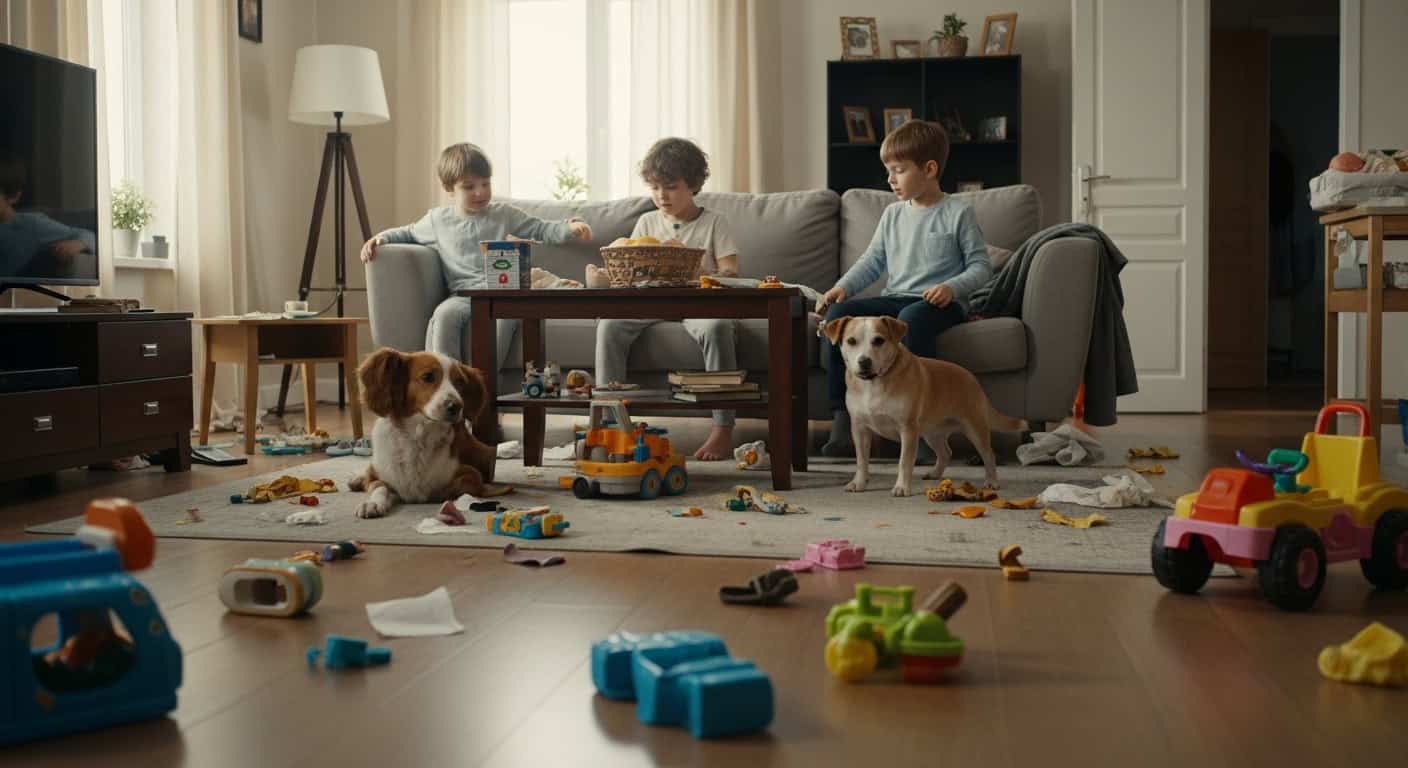Course 1: Cleaning Disasters - Why Your Home Gets Dirty Faster Than Your Neighbor's
Stop thinking endless cleaning is "just part of homeownership." Learn why some homes stay pristine with minimal effort while others become disaster zones within hours, and discover the hidden factors that could be sabotaging your cleaning efforts.

Cleaning Disaster Lesson 1: The Recontamination Trap
Your bathroom looks sparkling clean after 2 hours of scrubbing, but by Tuesday it's gross again. You're not imagining it - you're caught in the recontamination trap that makes 80% of homes get dirty faster after cleaning.
Using the wrong products or techniques doesn't just fail to clean - it creates sticky residue films that attract dirt like magnets. That "clean" bathroom counter is actually a dirt magnet waiting to grab every dust particle, hair, and water droplet that comes near it.
Professional cleaners know which products truly clean versus which ones just push dirt around and leave invisible residue. They use pH-balanced solutions that don't leave films, and they clean in the correct order to prevent cross-contamination between surfaces.
Key Point: Bad cleaning techniques make your home get dirtier faster than if you hadn't cleaned at all - it's not your imagination.
Cleaning Disaster Lesson 2: The Cross-Contamination Catastrophe
You spend all day cleaning, but somehow your kitchen still smells weird and surfaces feel sticky. Welcome to cross-contamination - the invisible enemy that turns your hard work into a breeding ground for bacteria and odors.
Using the same cloth to clean your toilet, then your kitchen counter (even after rinsing) spreads microscopic contamination throughout your home. That "clean" smell you think you achieved is actually masking bacterial growth that will explode into visible grime within days.
Professional cleaners use color-coded microfiber systems - blue for bathrooms, yellow for kitchens, red for high-contamination areas. They never cross-contaminate surfaces, which is why professionally cleaned homes stay cleaner longer and smell genuinely fresh.
Key Point: Cross-contamination doesn't just make cleaning ineffective - it actively spreads germs and creates the perfect environment for rapid re-soiling.
Cleaning Disaster Lesson 3: The Time-Wasting Tool Trap
You spend 6 hours cleaning what professionals finish in 2 hours, and your results look worse. The problem isn't your effort - it's using consumer-grade tools designed to look good in stores, not actually clean effectively.
That fancy all-in-one spray cleaner? It's a compromise product that does nothing particularly well. Your vacuum cleaner? Consumer models lose 50% of suction power within 6 months and spread microscopic particles back into the air while you clean.
Professional cleaners invest in commercial-grade equipment that removes dirt instead of redistributing it. Hospital-grade HEPA filtration, microfiber that actually traps particles, and cleaning solutions designed for maximum effectiveness, not marketing appeal.
Key Point: Consumer cleaning products are designed to sell, not to clean effectively - professional tools make the difference between frustration and success.
Cleaning Disaster Lesson 4: The Hidden Damage Disaster
Your expensive granite countertops are getting cloudy and etched despite regular cleaning. Your hardwood floors are dulling and scratching. Your beautiful shower is developing permanent stains. The cleaning products you trust are slowly destroying your home.
Acidic cleaners marketed for "tough stains" eat away at natural stone and metal fixtures. Abrasive scrubbers create microscopic scratches that trap dirt and bacteria. Incorrect dilution ratios cause chemical damage that looks like "wear and tear" but is actually preventable destruction.
Professional cleaners are trained in surface chemistry - they know which products are safe for each material in your home. They prevent thousands of dollars in damage by using the right cleaning method for granite versus quartz, hardwood versus laminate, stainless steel versus chrome.
Key Point: The wrong cleaning products don't just fail to clean - they cause permanent damage that costs thousands to repair or replace.
Cleaning Disaster Lesson 5: The Health Hazard You Can't See
Your home looks clean, but your family keeps getting sick, developing allergies, or suffering from respiratory issues. The problem isn't dirt you can see - it's the invisible contaminants that accumulate despite your best cleaning efforts.
Dust mites, mold spores, pet dander, and chemical residue build up in carpets, upholstery, and HVAC systems where consumer cleaning can't reach them. These allergens circulate constantly, creating health problems that seem unrelated to cleanliness but are directly caused by inadequate cleaning methods.
Professional cleaning includes allergen reduction protocols, proper ventilation during chemical use, and deep extraction methods that remove contaminants from their hiding places. They understand the connection between cleaning and health that goes beyond surface appearance.
Key Point: A home that looks clean isn't necessarily healthy - invisible contaminants require professional-grade removal techniques to protect your family.